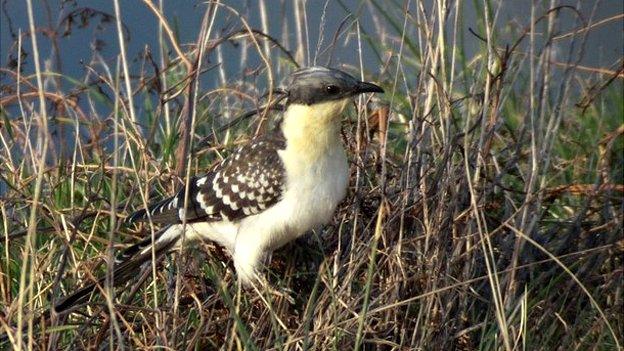Bird-watchers flock to Breydon Water to see great knot
- Published
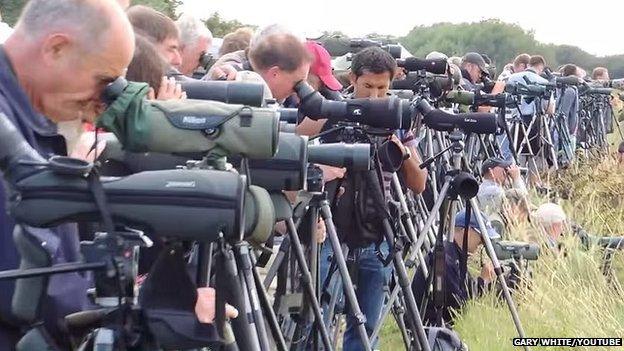
Thousands of twitchers have tried to spot the great knot on Breydon Water
Hundreds of bird-watchers have flocked to the Norfolk coast in the hope of catching a rare glimpse of a migratory great knot in Britain.
The elusive wading bird, more at home on the Australian coast, has only been seen in the UK on three occasions since 1989, experts said.
Brian Egan, from the Norwich-based Rare Bird Alert, said the "enigmatic bird" was "exciting for many people to see".
It was first spotted on Breydon Water, near Great Yarmouth, on Sunday evening.
"Great knot, external breed in a tundra habitat in Siberia and migrate as far as the Australian coast," said Mr Egan.

The great knot (Calidris tenuirostris)

Estimated worldwide population of 380,000
Classified as "vulnerable" by BirdLife International due to declining numbers
Species first spotted in the UK in Shetland in 1989, when the bird stayed for just a day
Then seen in Cleveland in 1996, when it earned the name "Great Dot", something which has become part of birding folklore
Last spotted in the UK in Lancashire in 2004
Sources: Rare Bird Alert/BirdLife International

"Where this bird has come from is difficult to say for sure, but it's likely to have been on the Asian coast and has got its route drastically wrong.
"It was around for 24 days, but was mostly seen from a very long distance so it became known as the 'Great Dot'. Now whenever people speak of great knots in Britain, Great Dot gets a mention and at times the bird on Breydon Water has lived up to this."
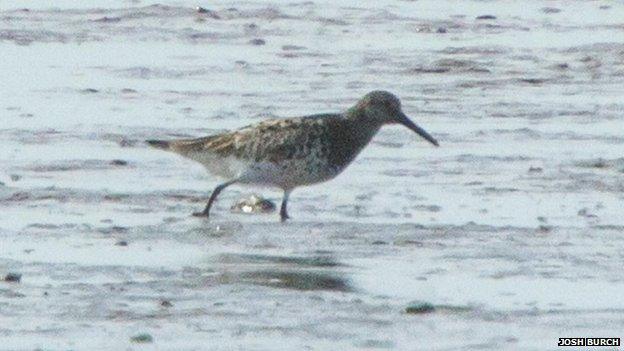
Sightings of the great knot were first reported on Sunday evening
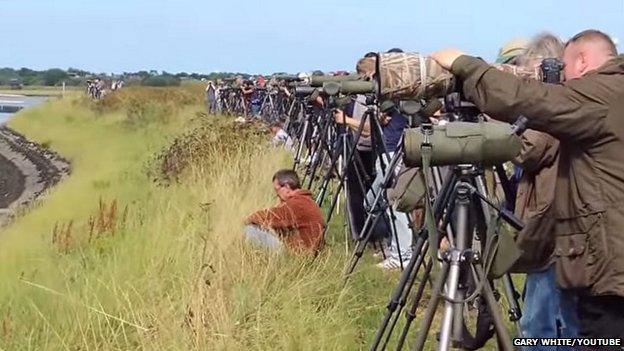
Twitchers travelled from across Europe to try to catch a glimpse
People have travelled from across Britain and Europe to see the bird in Norfolk.
"Birders are like anyone with a passion for something - we like to collect and see and like rare things," said Mr Egan.
"To see a new bird you've never seen in Britain before is an exciting thing for many people; the great knot is an enigmatic species for British birdwatcher to go and see.
"A guy from southern France travelled to see the bird on the day the story broke, which gives you some idea how big and important this sighting is."
- Published12 August 2013
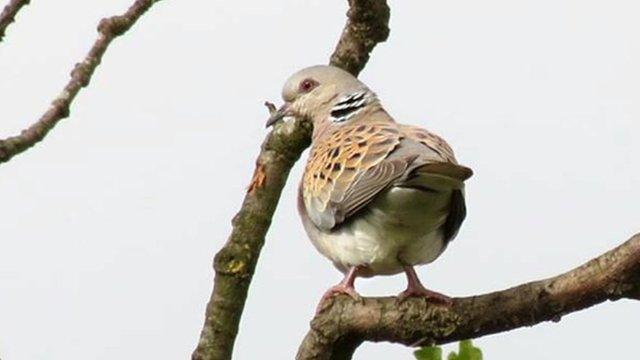
- Published19 March 2014
